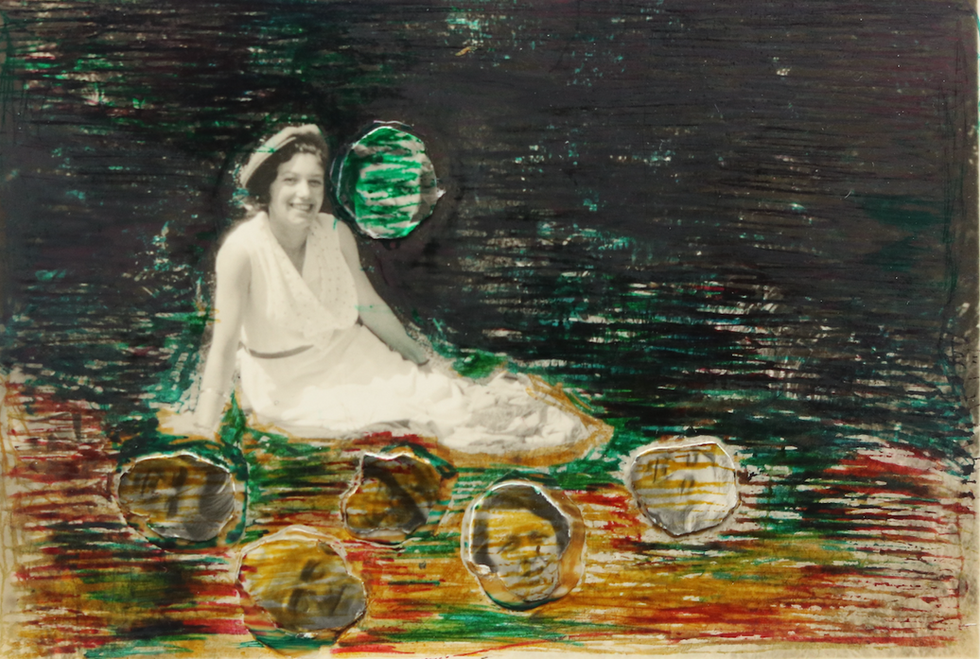FAMILY PHOTOS
2014
Looking at the Chapman Brothers I found the “Disasters of War” series whereby they had bought the original Goya prints and, however masterfully, drawn over them, I was intrigued by the idea of ownership. I don’t blame them for their act of “vandalism” but a system that sets the parameters for it to be possible.
I, therefore, decided to “vandalise” what I could afford, that being old family photos. I kept three of the original ones used in the series to give an indication of the provenance of the images.
As the series is called “Family Photos” the display simultaneously suggests an intimate birthday present for Mother’s Day as well as a shop window display where the photos inside the frames being sold are of unknown characters.
Mikhail Bakhtin recognises the qualities of the carnivalesque as mocking life and more importantly mocking and thus escaping death. This is characterised through celebrating the grotesque and the materiality of the corporeal, as a way of removing godly aspirations within this physical realm of existence:

















